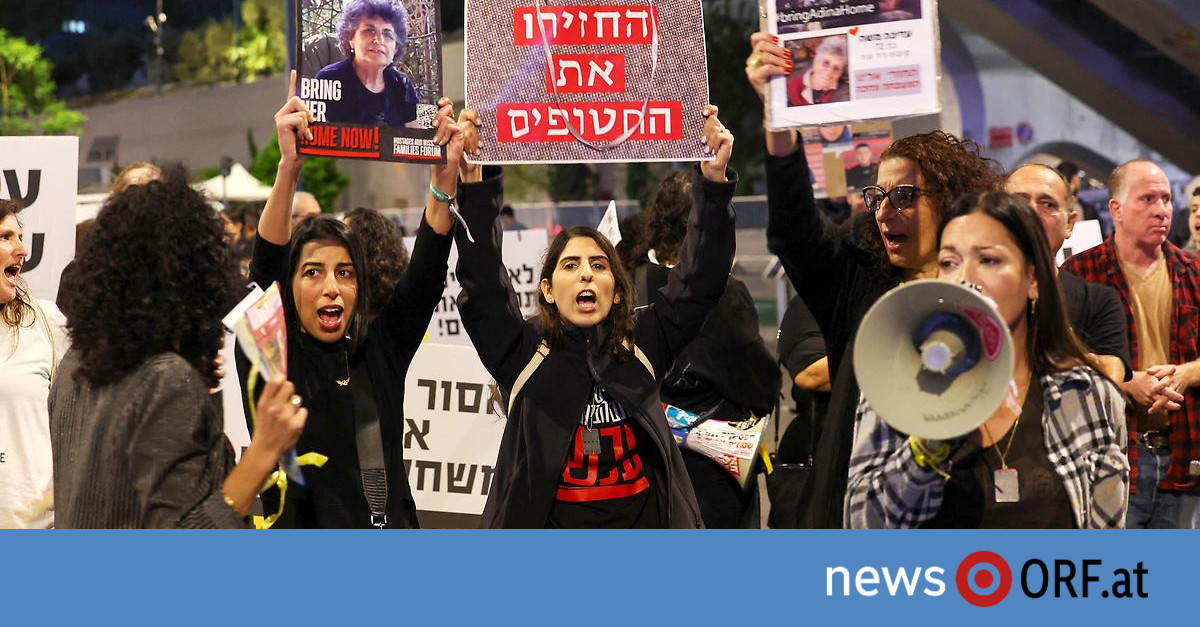“The Israeli government is committed to bringing all kidnapped people home. Tonight the government approved the blueprint for the first phase to achieve this objective, under which at least 50 abducted women and children will be released within four days, during which fighting will cease,” the government statement said. Every ten hostages released would extend the ceasefire by one day.
No further details were officially announced that evening, especially none about the concessions Israel had made to Hamas. According to Israeli media, however, it has been agreed that 30 kidnapped Israeli children, eight mothers and another twelve women will be released from Thursday. In return, Israel will release Palestinian women and minor Palestinians from prison. Part of the agreement also includes approving additional trucks carrying food, medical supplies and fuel to enter the Gaza Strip.

EBU/ILIPBC Netanyahu promoted the agreement with Hamas in a televised speech, but stressed that the war would not end after the ceasefire
24-hour appeal deadline to the Supreme Court
Several media outlets reported that the ceasefire and hostage release could begin on Thursday. Implementation of the agreement must wait 24 hours to give Israeli citizens the opportunity to appeal to the Supreme Court to block the release of Palestinian prisoners.
Six hospitals in Israel are already preparing to receive the hostages, where they can be examined and treated away from the public and reunited with their families, according to the newspaper Haaretz.
According to Netanyahu, the war did not end after the ceasefire
According to Netanyahu, fighting in the Gaza Strip will continue after the ceasefire. The war will continue even after a deal with Hamas is implemented “until we have achieved all of our objectives,” Netanyahu said on Tuesday night, ahead of the cabinet vote. Israel’s objectives included the elimination of Hamas and the return of all hostages. Furthermore, there should no longer be a threat to Israel in Gaza.
debate
Middle East: How to break the spiral of violence?
Since a change in the law in 2014, full cabinet approval is required for a prisoner exchange. This means that early release of prisoners is only possible under strict conditions, for example if it serves national security or is part of a foreign policy agreement.
Hamas agreed before Israel
Qatari mediators and Hamas leader Ismail Haniya had previously said a deal was in sight. The AFP news agency learned from circles within Hamas and Islamic Jihad, which was also involved in the October 7 attacks, that both Islamic militant organizations have agreed to conditions for a ceasefire.
US President Joe Biden also helped improve the “framework” of the deal to include the release of “more hostages at a lower price,” Netanyahu said. As reported by the news portal Axios, citing two people familiar with the matter, US Secretary of State Anthony Blinken will travel to Israel for talks early next week. He will speak to Israeli and Palestinian representatives about the war in Gaza.
Unprecedented terrorist attack
The war began on October 7 with a Hamas attack on Israel, in which the Islamists killed 1,200 people and took around 240 hostages, according to Israeli data. Israel responded with airstrikes and an invasion of Palestinian territory.
Since then, at least 13,300 Gazans have been killed, according to Palestinian authorities. According to the UN, two-thirds of the 2.3 million people on the densely populated coastal strip are now homeless. The humanitarian situation in that country, which is considered catastrophic, has led to growing international calls for a ceasefire.

